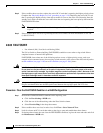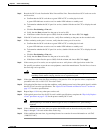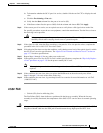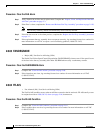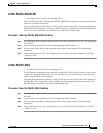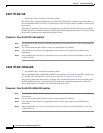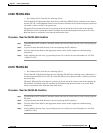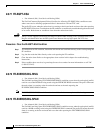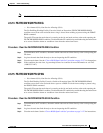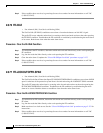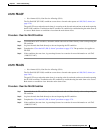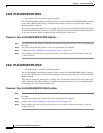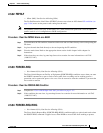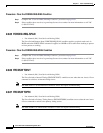
2-63
Cisco ONS 15327 Troubleshooting Guide, R3.4
March 2004
Chapter 2 Alarm Troubleshooting
Alarm Procedures
2.6.69 FE-DS3-NSA
• Not Alarmed (NA), Non-Service Affecting (NSA)
The Far End DS-3 Equipment Failure Non-Service Affecting (FE-DS3-NSA) condition occurs when a
far-end XTC-28-3 card equipment failure occurs, but does not affect service because the port is protected
and traffic is able to switch to the protect port.
The prefix FE means the main alarm is occurring at the far-end node and not at the node reporting
FE-DS3-NSA alarm. Troubleshoot the FE condition by troubleshooting the main alarm at its source.
Both the alarms or conditions clear when the main alarm clears.
Procedure: Clear the FE-DS3-NSA Condition
Step 1 To troubleshoot an FE condition, determine which node and card links directly to the card reporting the
FE alarm.
Step 2 Log into the node that links directly to the card reporting the FE condition.
Step 3 Clear the main alarm. Refer to the appropriate alarm section in this chapter for troubleshooting
instructions.
Step 4 If the condition does not clear, log onto http://www.cisco.com/tac for more information or call TAC
(1-800-553-2447).
2.6.70 FE-DS3-SA
• Not Alarmed (NA), Non-Service Affecting (NSA)
The Far End DS-3 Equipment Failure Service Affecting (FE-DS3-SA) condition occurs when there is a
far-end equipment failure on an XTC-28-3 card that affects service because traffic is unable to switch to
the protect port.
The prefix FE means the main alarm is occurring at the far-end node and not at the node reporting the
FE condition. Troubleshoot the FE condition by troubleshooting the main alarm at its source. Both
alarms or conditions clear when the main alarm clears.
Procedure: Clear the FE-DS3-SA Condition
Step 1 To troubleshoot an FE condition, determine which node and card links directly to the card reporting the
FE alarm.
Step 2 Log into the node that links directly to the card reporting the FE condition.
Step 3 Clear the main alarm. Refer to the appropriate alarm section in this chapter for troubleshooting
instructions.
Step 4 If the condition does not clear, log onto http://www.cisco.com/tac for more information or call TAC
(1-800-553-2447).




